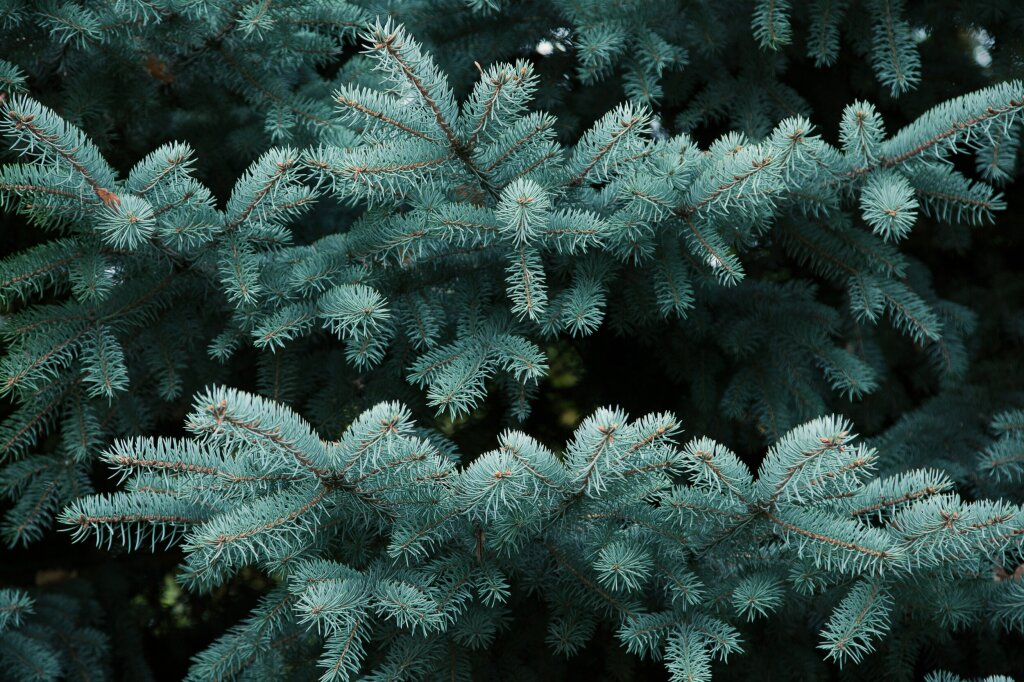The festive carbon sink
The holiday season is upon us, which, for many people, involves the purchase of a Christmas tree. But did you know: a Christmas tree not only makes your home look more festive, but it can also act as a carbon sink in your living room?
Before we unwrap the link between Christmas trees and CO₂, let’s cover the basics: What is a carbon sink? According to the IPCC, a carbon sink is a reservoir where the greenhouse gas, CO₂, is stored. More broadly speaking, it’s any “process, activity, or mechanism that removes a greenhouse gas from the atmosphere” (source). Trees are carbon sinks because they absorb CO₂ through photosynthesis. During this process, carbon dioxide is converted into biomass and stored in tree trunks, branches, leaves, and roots (source). Even after you bring your Christmas tree home, it’ll continue absorbing CO₂ as long as it's kept alive and breathing.
How much CO₂ can a Christmas tree store?
As a rough guide, it's estimated that over a 10-year lifespan, a Christmas tree may accumulate around 18 kg of CO₂ (source). But more specifically, the quantity of CO₂ stored by a Christmas tree largely depends on the age and the species. Essentially, the more time a tree spends growing, the more carbon dioxide it can absorb. Most potted Christmas trees of the conifer variety, such as pine, spruce, and fir, typically grow to 3-5 feet tall and live around 8-12 years. But when left to spread their roots in the wild, some Christmas trees can even exceed 50m in height and live for over 500 years. Fun fact: The tallest Christmas tree ever recorded was a Douglas Fir in 2005, which reached a staggering 62m tall! Tree giants like these are the best variety for carbon collecting as they store larger quantities of CO₂ in their tree trunks and extensive root systems.
But aside from how much CO₂ your Christmas tree can absorb, it’s also worth questioning what happens to that CO₂ at the end of the holiday season. Unfortunately, trees don’t provide a permanent carbon dioxide storage solution because they can die, rot, or burn, after which much of the CO₂ they’ve absorbed is released back into the atmosphere. This is a problem because millions of Christmas trees are abandoned in landfills at the start of each new year. Not only is this a waste of all that CO₂-collecting potential, but when trees are left to rot and break down, they also release methane — a greenhouse gas 25 times more potent than carbon dioxide (source). For this reason, potted trees are the better choice for the environment. They’re the ideal size for your living room, keep their pine-fresh scent for much longer, and most importantly, they can be returned to nature after the holiday season, where they’ll continue to collect and store CO₂ for years to come. But if you have opted for a cut tree, you can still do your bit for the planet by disposing of it safely after Christmas. Top tip: Put the wood into a chipper and spread the mulch in your garden. This returns the organic matter to the soil, where it can contribute to building soil carbon (source).
What do Christmas trees and climate tech have in common?
If you’re wondering about the connection between climate tech and nature’s carbon sinks, the answer is simple: we have a shared mission. The fact is, we need to remove huge quantities of CO₂ from our atmosphere, and we need all solutions working together to achieve this — nature and technology. By absorbing CO₂ from the atmosphere, trees of the Christmas variety or otherwise are of great value in the fight against climate change. But the thing is, relying on trees alone won’t be enough to halt global warming and rebalance our climate. We also need permanent carbon removal, and we need it on a great scale — that’s where climate tech comes in. Technology solutions, such as Climeworks’ direct air capture (DAC), can complement nature's carbon sinks by drawing excess CO₂ from the air. When combined with geological storage (DAC+S), this serves as a permanent carbon removal solution. Our latest facility, Orca, can remove 4,000 tons of CO₂ from the air each year on only 0.42 acres — proving DAC+S as highly land-efficient and scalable.
So, how can you best support the climate this festive season? If you’re already taking positive steps — perhaps by selecting a potted Christmas tree or planning to dispose of your tree responsibly — you might consider going one step further by removing CO₂ from the air with us. With Climeworks, you can give the gift of permanent CO₂ removal and inspire your friends and family to take positive climate action this holiday season.
Interested to learn more?
Learn how to support the planet this Christmas using our: Carbon footprint calculator.
No Christmas cookies for our website this year! Read more in: Why we’re going cookie-less.
Curious about why we chose the name Orca? Introducing: The story behind our Orca plant.
Choose the gift of climate impact
Inspire your friends, family, and employees with permanent, direct climate action.


